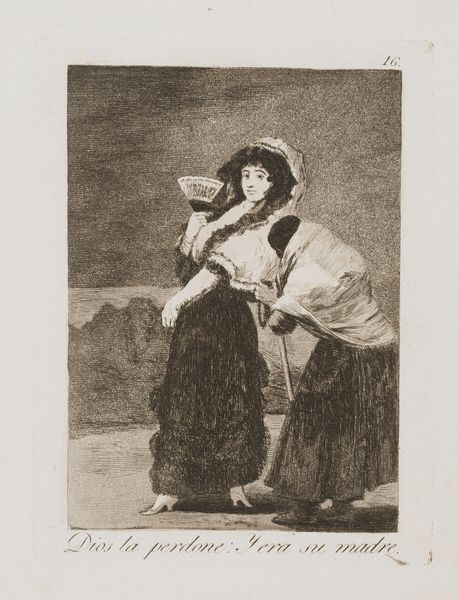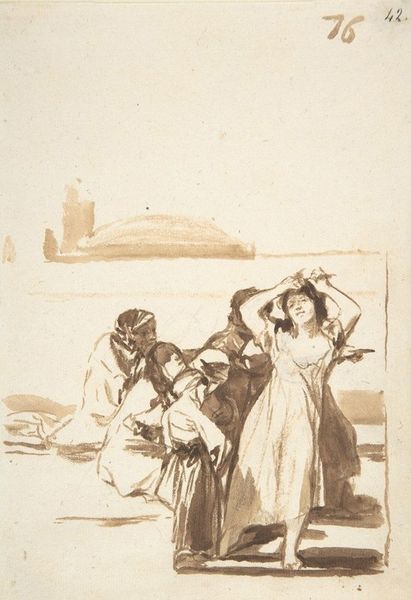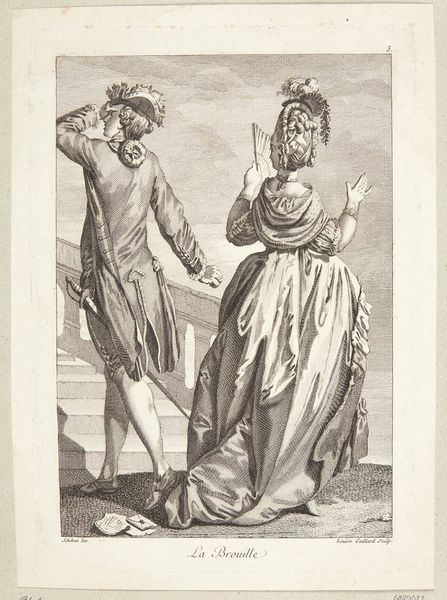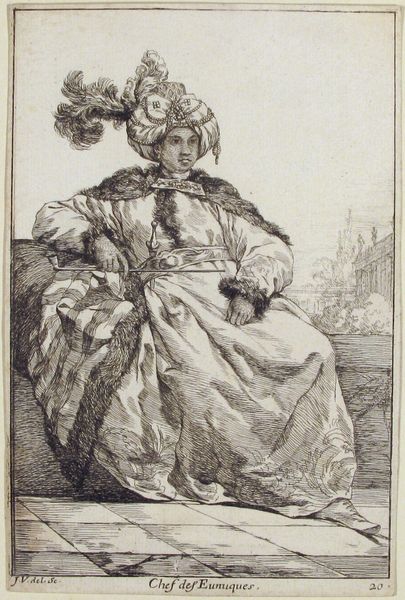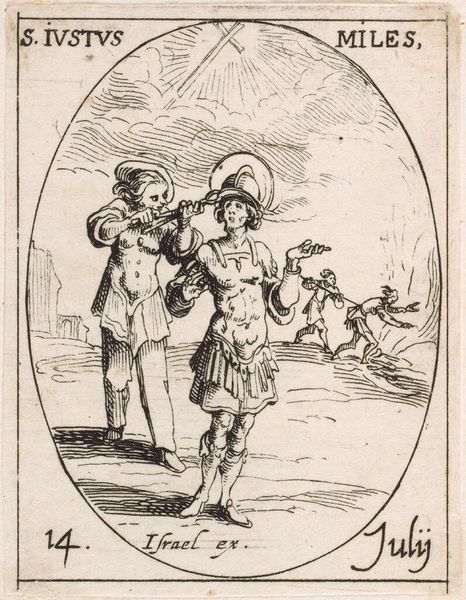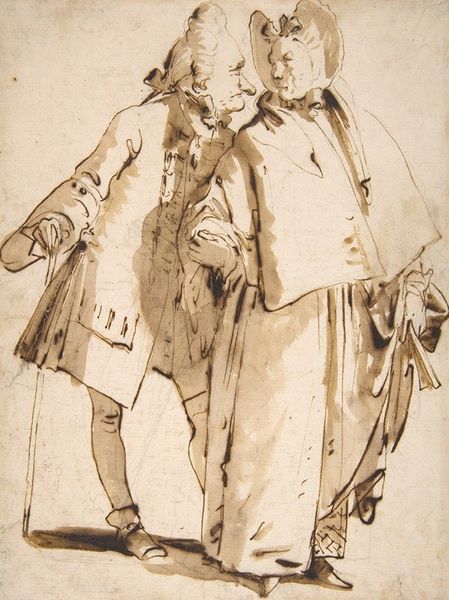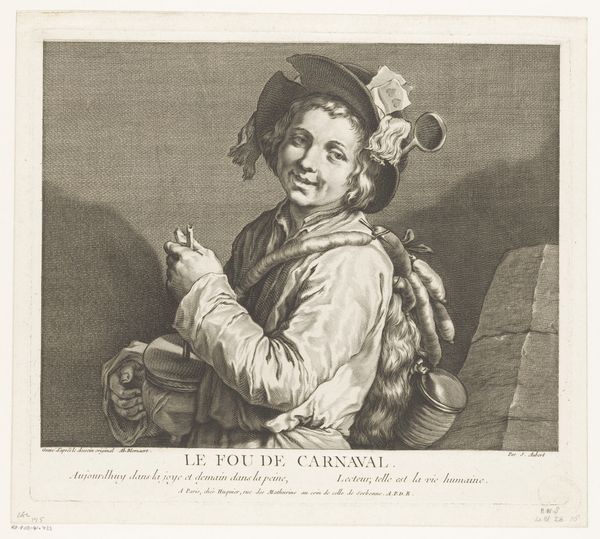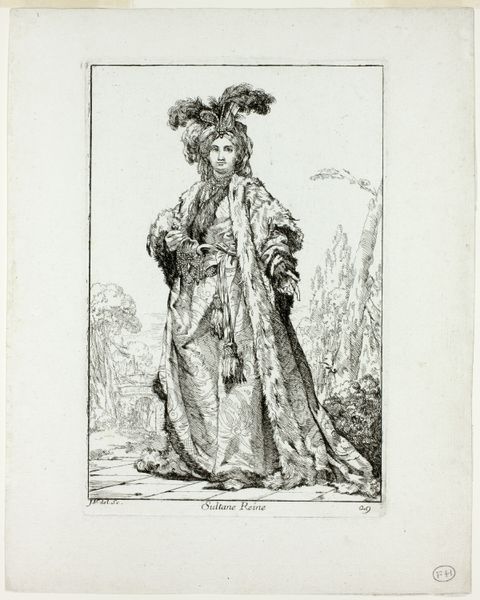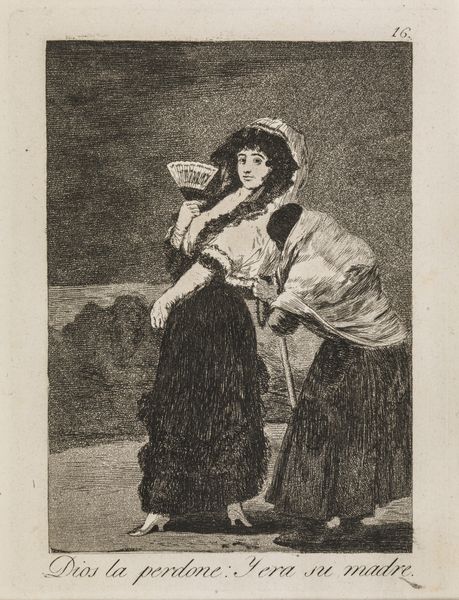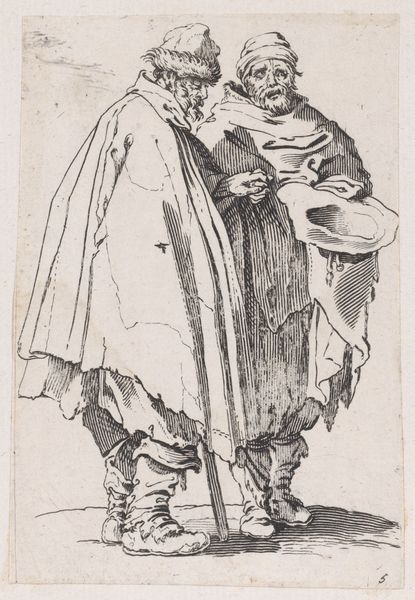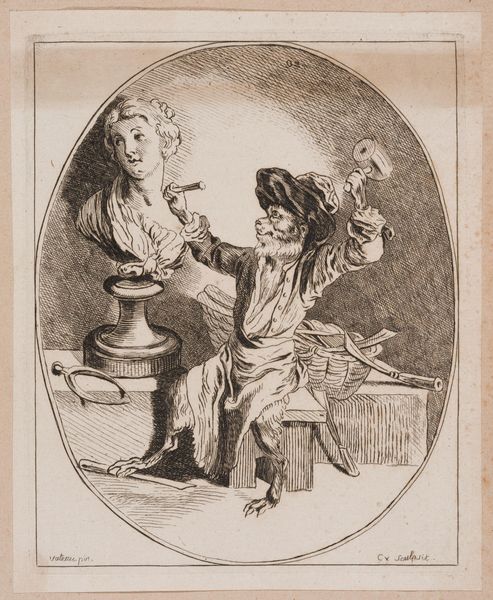
Giovanni Domenico Tiepolo made this watercolor entitled The Declaration of Love sometime in the 18th century. It's an interesting title, as it suggests a sentimental scene, yet the figures seem strangely aloof. The woman, elaborately dressed, looks away with an expression that's hard to read. The man, equally adorned, gestures expansively, but his face is obscured. This ambiguity may reflect the social conventions of the time in Venice. The wealthy often engaged in elaborate displays of affection, yet genuine emotion was often secondary to social status. Consider the emphasis on costume and the theatrical poses. Tiepolo, working within a culture of spectacle, may be commenting on the performance of love rather than its authentic expression. The landscape, with its distant city and dramatic mountains, adds to the theatricality, creating a stage-like setting for this enigmatic encounter. To understand this artwork, you might research the social customs of 18th-century Venice and compare it with the work of other Venetian artists. What did love mean in a society governed by strict social hierarchies? It is through such careful historical enquiry that art reveals its secrets.
Comments
No comments
Be the first to comment and join the conversation on the ultimate creative platform.
